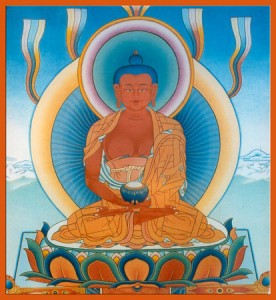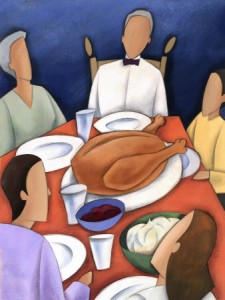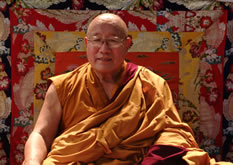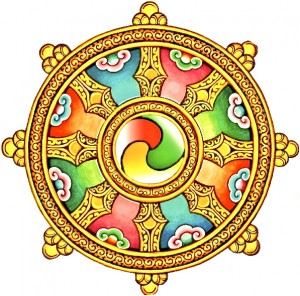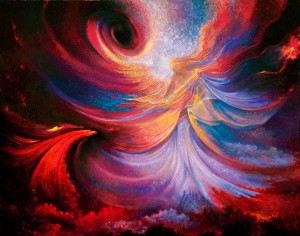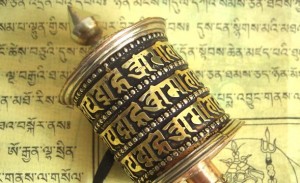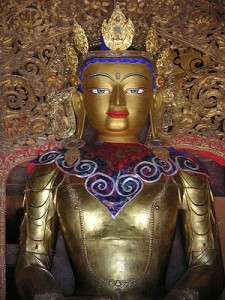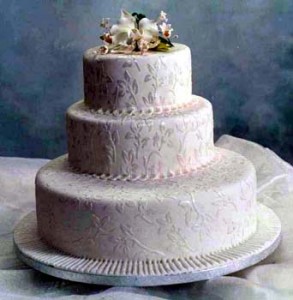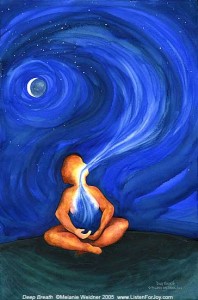 An excerpt from a teaching called the Eightfold Path by Jetsunma Ahkon Lhamo
An excerpt from a teaching called the Eightfold Path by Jetsunma Ahkon Lhamo
In the Four Noble truths, the Lord Buddha taught that all sentient beings are suffering. Even if there is temporary happiness, there is suffering in samsara and that the origin of suffering is attachment or desire.
I thought I would tell you about my Blackberry as an example of this. There is nothing inherent in this box that means suffering. There are wires and buttons, and a SIM chip in it. It even lights up and does funny things. The things I can do with this are just amazing. So there’s really no unhappiness with this, right? Wrong. I have become a Crackberry addict. Hi. My name is Jetsunma, and I’m an addict. From the first moment I got it; it’s been a joy and a horror at the same time. The joyful part is you could practically control the world from it or at least try to. The less than joyful part about it is that it will try to control you. And you cannot get a minute’s peace if you are carrying around your little computer, because emails are constantly coming. So it’s a mixed blessing, and I knew that desire had struck me.
It’s such a great Buddhist lesson because like I said, this gizmo’s great. There’s nothing wrong with it. It should not cause suffering. But I have these nightmares. I’ve actually had nightmares that I lost my Blackberry. And because of that I couldn’t call anybody, and I was somewhere where I didn’t know where I was, and I couldn’t call anybody to come get me, because once you have a Blackberry, you don’t remember any phone numbers. Everything’s on speed dial. That was my first dream.
My second dream was in a terrible situation. I couldn’t find my two dogs – my two heart children – Jada and Ewok. I couldn’t find them, and there was nobody around to help me look for them. And I’m thinking, “I’ve got to call for some help. I’ve got to call for some help.” Guess what? It was busted. So, there I was grieving about my dogs, and dying about my CrackBerry!
This is a perfect display of what the Buddha taught. The Buddha taught that it is attachment and desire that bring us suffering. Now, before I had this thing, I didn’t desire it. But once I got it, I’m all over it. I tell you, I’m an addict, and I’m going to do the steps. Because of attachment, I have fear that I’ll lose this thing. And I’m watching my mind do this. It is so absolutely essential to watch your mind when it plays those games and does those trips to you. It is so educational and so awe inspiring, because although obviously the Buddha wouldn’t have known about a BlackBerry, he knows the condition of my mind due to attachment and desire. I love the stuff this thing does. I can get weather from three different sources. I’m a real weather wonk. I can read news on my BlackBerry. But here I am with this very cool thing that is now causing me suffering.
Now it’s a silly example because most of us suffer from things a whole lot worse than losing a CrackBerry. I call it CrackBerry because that’s what it is. People suffer from more horrible things but it is a good example to show you that even something that’s a gift becomes a terrible burden when there’s too much attachment and too much desire. This is a silly example because I can put this thing down. In fact, I can throw it in a lake, and then it’s over. The suffering is ended. I can control that, but so many people have things that are happening in their lives that they have no control over, or at least they feel that they don’t. It seems as though things are happening from the outside. And because of what happens to us and because of what we are given and what we are programmed with, we develop these very strong attachments. If it’s to a person, it’s obvious. If it’s to a car, it’s obvious. If it’s to a BlackBerry, it’s obvious. If it’s to a house, it’s obvious. You know what the deal is there. But most of the time our desire is so mixed and so churning, that we can hardly see or hardly track our mind well enough to know what exactly is going on. And so as the Buddha taught, we tend to think that we are suffering because of circumstance when in fact we are suffering because of desire.
I invite you as we study the Four Noble truths and the Eightfold Path to begin to research your own mind. Begin to see, and watch yourself. Watch the way you perceive. Watch the way you think. Begin to learn from your own mind. You may be surprised. We don’t realize how attached and filled with desire we are even when we are trying to practice renunciation. And it takes examining the mind.
For instance, I could have said, “Well, this is a necessary evil. I have to have it because of my job, which I do. And I could blame it on outward circumstances, and say, “Oh poor me. I have to have this because of my job.” I could go round and round about it, but the truth of the matter is that it’s my own attachment. I was fine without it and I’ll be fine after it. It’s the attachment, it’s our reaction that sucks us in and makes us habituate.
I just wanted to mention that as part of the Four Noble Truths, to give an example of how the arising of suffering is the same as the arising of desire and attachment. That’s really what causes our suffering. Our own reaction. The good news about that is that we have some power. We have some control.
It’s hard to control your desire when knives are coming at you. But for the most part, that is not what people are suffering from. They are not suffering from knives coming at them. They are not suffering from something that’s so profound and so reactive and so immediate that they have no time even to even things out.
We have a marvelous capacity to watch our own minds, and this is unique to humanity. In none of the other six realms of cyclic existence, except for the human realm and only under certain karmic conditions, is there the capacity to watch one’s own mind and to practice and awaken, and to accumulate merit most of all. There is simply no way in any of the other realms. And that’s why being a human is a precious rebirth, and worth more than you could ever assemble in a hundred lifetimes in terms of material goods, because of what is capable, what is possible here by following the Eightfold Path and using our minds to sever the sickness and narcotic of desire and attachment.
© Jetsunma Ahkon Lhamo
